
May 19 - June 23, 2016
Quest for Permanence examines our play with time in its many forms and the tensions that arise as time and place collide. The artifacts we leave behind give the illusion of permanence to ourselves as well those that come after us. This exhibition brings together local, national and international artists employing visual art, digital media and performance, offering a range of interpretations of this universal issue.
Wasmer Gallery - Co-curated by Barry Cavin, John Loscuito and Michael Salmond - Sponsored by Gene and Lee Seidler, The Beaches of Fort Myers and Sanibel, and WGCU Public Media
Kent Anderson Butler, “Bathe” (still, 2:20), 2015, Video
Reminiscent of quests for extending life, such as the search for the Fountain of Youth
and the science of cryogenics, this exhibition features seven artists documenting
and reflecting on the complexity of time and place. Quest for Permanence features
a wide range of materials and approaches to making art. Performance, installation,
design, photography and more show a few of the varied methods that we as artists and
humans use to preserve our individuality.
The traces left behind from our lives suggest the illusion of permanence as we struggle against our finite existence. We assure ourselves that it is for others that we leave these traces, but the truth, of course, is that we want to live forever.
Artifacts, made from more durable materials such as stone, bronze, frescos and other forms of art and architecture serve as reminders of those who have come before us. As we have moved into the digital age the action of documenting our lives has become ubiquitous. The works in this exhibition show seven unique perspectives on the human condition using a wide range of materials and techniques. From the spiritual to the mundane, the familial to the mythic, these artists reveal our absurdities and our grand desires.
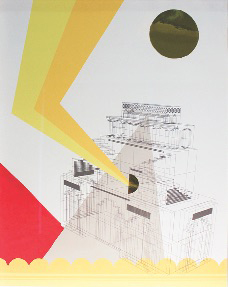
Cyane Tornatzky, “An Attempt at Recreating Utopia Through Mechanical Means #1,” 2014, Inkjet print of 3D file, collage, 32 x 26", Courtesy of the artist
Cyane Tornatzky, (American, b. 1965)
Cyane Tornatsky is an Associate Professor of Art and Electronic Art Coordinator at Colorado State University. She holds a M.F.A. in Conceptual and Information Arts from San Francisco State University, San Francisco, CA and a M.A. in Education, San Francisco State University and a BA in Philosophy from College of Wooster, Wooster, OH.
Cyane Tornatzky, “An Attempt at Recreating Utopia Through Mechanical Means #1,” 2014, Inkjet print of 3D file, collage, 32 x 26", Courtesy of the artist
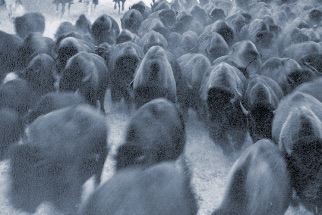
Ghostbird Theatre, “Tracing Ghosts,” 2014, Image still, Courtesy of the artist
Ghostbird Theatre, (founded May 2012)
Courtright produced work for this exhibition about beauty and finding a path that is a seed for a better future. His images from a scrap yard are initially a look at waste, but under the surface of the subject lies a sustainable practice of repurposing and reusing these materials. Batteries and LEDs are integrated into a circuitry established by Courtright’s use of a conductive paint in his silkscreening process thus representing a reclamation of energy through a reuse of discarded materials. The LEDs provide evidence of the electricity flowing through the print. Ever moving electricity is provided as a symbol of a continually changing culture as well as his hope that we can bring about positive change in our environmental practices. He considers the work in this series to be kinetic art on a molecular level.
Courtright is the Studio Technician for the Robert Rauschenberg Foundation’s Residency Program in Captiva, FL. In his capacity there, he is able to explore process and materials as he assists internationally recognized artists in their own endeavors.
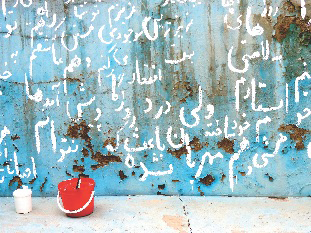
Leila Mesdaghi, “Deeper Than Sorrow,” 2015-2016, Mixed media installation, Courtesy of the artist
Leila Mesdaghi, (Iranian American, b. 1977)
Leila Mesdaghi is a multi-media artist and she holds a BA in Art from Florida Gulf Coast University, Fort Myers, FL and a BA in Law from Tehran Azad University, Tehran, Iran.

Chad Jensen, “Silhouette de la Garonne,” 2014, Exterior: Gold Mirror Polished Stainless Steel Interior: Mirror Polished Aluminum, 37 x 72 x 15 1/4”, Courtesy of Thomas Riley Studio
Chad Jensen, (American, B. 1977)
Leila Mesdaghi is a multi-media artist and she holds a BA in Art from Florida Gulf Coast University, Fort Myers, FL and a BA in Law from Tehran Azad University, Tehran, Iran.
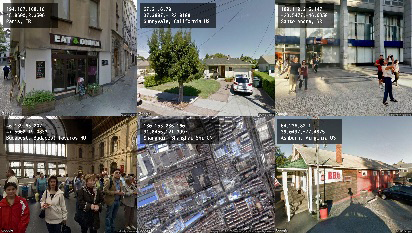
Benjamin Grosser, “Tracing You” (still), 2015, Computational surveillance system, Courtesy of the artist
Chad Jensen, (American, B. 1977)
Benjamin Grosser is an assistant professor in the School of Art + Design at the University of Illinois at Urbana-Champaign (UIUC). He holds an MFA in new media and an MM in music composition (both from UIUC).
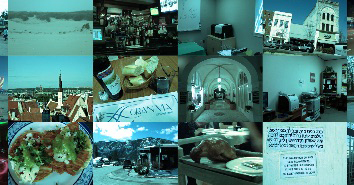
Hasan Elahi, “Thousand Little Brothers v4” (detail), 2015, Pigment print, 120 x 161”, Courtesy of the artist
Hasan Elahi, (American, B. 1972)
Hasan Elahi is an Associate Professor of Art at University of Maryland and from 2011 to 2014 was Director of Design | Cultures + Creativity in the Honors College. He was a 2010 Alpert/MacDowell Fellow and in 2009, he was Resident Faculty and Nancy G. MacGrath Endowed Chair at Skowhegan School of Painting and Sculpture.
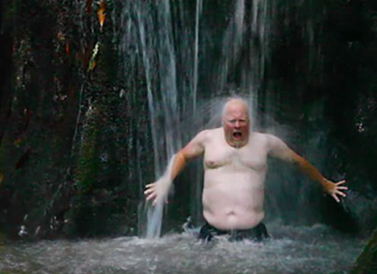
Kent Anderson Butler, “Bathe” (still, 2:20), 2015, Video, Courtesy of the artist
Kent Anderson, (American, B. 1971)
Kent Anderson Butler is the Director of Visual Art & Professor in the Department of Art & Design at Azusa Pacific University. He holds a M.F.A. in Creative Photography Emphasis from California State University, Fullerton, CA and a B.S. Art in Video and Film from Biola University, La Mirada, CA.
